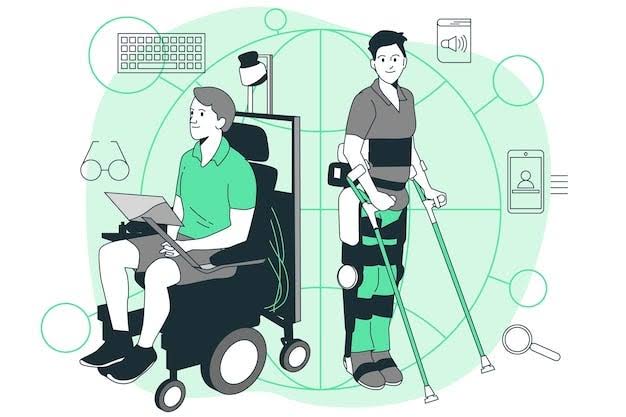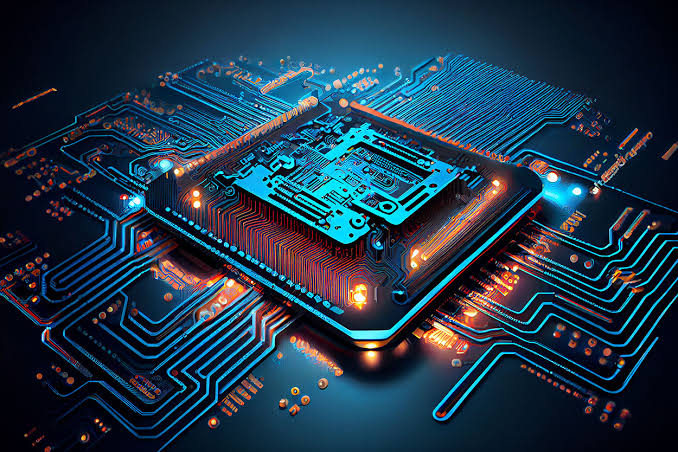Virtual Assistants: The emergence of virtual assistants (and voice AI) has significantly altered the manner in which individuals engage with technology; reshaping industries, businesses and even daily habits. From modest beginnings as rudimentary voice command systems to the advanced AI-driven assistants we recognize today, virtual assistants have undergone rapid evolution.
These technological advancements are propelled by a blend of machine learning, natural language processing (NLP) and vast enhancements in data processing power. This article delves into the evolution of virtual assistants and voice AI, scrutinizing key milestones, technological breakthroughs and their increasing influence on various industries (and society) as a whole. However, the implications remain complex; although the benefits are substantial, challenges persist.
Early Beginnings of Voice Command Systems
Before the term “virtual assistant” became part of the common lexicon, voice command systems were already in development. These early systems were primitive compared to today’s technologies and had limited functionality. The focus was primarily on recognizing simple voice commands and converting them into actions. Early voice recognition systems emerged in the 1950s and 1960s, but these systems were far from perfect and could only recognize a limited vocabulary.
The First Voice Recognition Systems
One of the earliest milestones in the development of voice recognition was IBM’s “Shoebox,” introduced in 1961. Shoebox could recognize a total of 16 spoken words, which allowed users to perform basic arithmetic by speaking numbers and commands. While revolutionary for its time, Shoebox demonstrated the limitations of early voice recognition technology, as it could only handle predefined words and lacked the flexibility to interpret natural language.
In the 1980s, Bell Labs and Dragon Systems made further strides in voice recognition. Dragon Dictate, released in 1990, was one of the first commercially available speech recognition software applications. Users could dictate into a computer, and the software would convert their speech into text. However, Dragon Dictate required extensive training, as the system needed to adapt to individual voices, making it cumbersome and less user-friendly than current technology.
The Emergence of Virtual Assistants
The concept of a virtual assistant, which could perform tasks and respond to natural language queries, began taking shape in the early 2000s. Advances in natural language processing (NLP), cloud computing, and machine learning allowed developers to create systems capable of understanding and responding to more complex human requests.
Apple’s Siri: A Game-Changer
In 2011, Apple introduced Siri, the first widely available virtual assistant. Integrated into the iPhone, Siri marked a turning point in voice AI technology. Unlike earlier systems, Siri could process natural language and offer responses beyond simple commands. Siri’s capabilities included making phone calls, sending messages, setting reminders, and answering general knowledge questions by accessing online databases.
Siri was groundbreaking not only for its technological capabilities but also for its mainstream appeal. By making voice assistants widely available to consumers, Apple demonstrated that virtual assistants could enhance daily life. Siri’s conversational tone and witty responses also helped to humanize voice AI, making it more relatable and less robotic than previous iterations.
Google Assistant: AI-Driven Intelligence
Google Assistant, launched in 2016, took the capabilities of virtual assistants to the next level by incorporating advanced AI and machine learning algorithms. Google Assistant could perform many of the same functions as Siri but with improved accuracy and more sophisticated responses. It was integrated with Google’s extensive search engine, allowing users to receive answers to complex questions that Siri could not handle as effectively.
One of the key advancements of Google Assistant was its ability to understand context. For example, users could ask follow-up questions without repeating the original subject, and Google Assistant could infer what they were referring to. This made conversations with the virtual assistant feel more natural and less fragmented, allowing for a more seamless user experience.
Natural Language Processing and Machine Learning
The heart of the evolution of virtual assistants lies in advancements in natural language processing (NLP) and machine learning. NLP enables virtual assistants to understand, interpret, and generate human language in a way that is meaningful and useful. Over time, NLP technologies have grown more sophisticated, allowing virtual assistants to comprehend various languages, dialects, and even emotional tones.
Deep Learning and Voice AI
Deep learning, a subset of machine learning, plays a pivotal role in the development of voice AI. Using deep learning models, virtual assistants can recognize speech patterns, identify key phrases, and predict user intentions with greater accuracy. These models continuously improve as they are exposed to more data, making virtual assistants smarter over time.
Virtual assistants can now handle more complex interactions, including recognizing user preferences, providing personalized recommendations, and learning from past interactions to predict future needs. For instance, a virtual assistant might learn that a user prefers a specific type of music in the morning and automatically suggest similar playlists.
The Role of Cloud Computing
The evolution of virtual assistants would not have been possible without the rapid development of cloud computing. Cloud computing allows virtual assistants to access vast databases and perform complex calculations in real-time, enabling them to deliver accurate responses within seconds. This has made it possible for virtual assistants to handle increasingly complex tasks and respond to a wide range of user inquiries, from setting appointments to controlling smart home devices.
Integration with the Internet of Things (IoT)
As voice AI continues to evolve, its integration with the Internet of Things (IoT) has created new possibilities for smart living. Virtual assistants such as Amazon’s Alexa and Google Assistant are now being used to control a wide range of smart home devices, including lights, thermostats, security cameras, and appliances.
Alexa and the Smart Home Revolution
Amazon’s Alexa, launched in 2014, is one of the most widely used virtual assistants for smart home integration. Alexa-powered devices, such as the Amazon Echo, allow users to control connected devices using voice commands. For example, users can turn off the lights, adjust the thermostat, or lock their doors simply by speaking to Alexa.
The ability to control smart home devices with voice commands has made daily tasks more convenient and accessible, particularly for individuals with disabilities or mobility issues. Alexa’s open platform also allows developers to create “skills,” expanding the functionality of the assistant and integrating it with third-party applications and services.
Virtual Assistants in the Workplace
In addition to smart homes, virtual assistants are making their way into the workplace, where they are helping businesses streamline operations and improve productivity. Virtual assistant such as Microsoft’s Cortana and Google Assistant can schedule meetings, set reminders, and even analyze data. By automating routine tasks, virtual assistants free up time for employees to focus on more strategic and creative work.
In customer service, voice AI systems are being used to handle customer inquiries, provide technical support, and even process transactions. These systems can operate 24/7, providing businesses with a cost-effective way to enhance customer service while reducing the workload on human employees.
The Ethical and Privacy Concerns
As virtual assistants become more integrated into daily life, concerns about privacy and data security have emerged. Virtual assistants collect vast amounts of data, including voice recordings, location information, and personal preferences. While this data is essential for improving the performance of virtual assistants, it also raises questions about how this information is stored, shared, and used.
Privacy Issues
One of the primary concerns with virtual assistants is the potential for unauthorized access to personal data. Instances of voice assistants inadvertently recording conversations or responding to unintended commands have raised alarms about data privacy. Many users are unaware of how much information virtual assistants collect, leading to concerns about the potential misuse of personal data by companies or hackers.
Ethical Considerations
Beyond privacy, there are ethical questions surrounding the use of virtual assistants in decision-making processes. For example, virtual assistants could potentially be used to influence consumer behavior by suggesting products or services based on user data. This raises concerns about the line between helpful recommendations and manipulative marketing.
The Future of Virtual Assistants and Voice AI
Looking ahead, the future of virtual assistants and voice AI is full of exciting possibilities. As AI and NLP technologies continue to advance, virtual assistants will become even more intelligent, responsive, and human-like. We can expect virtual assistants to play an even larger role in daily life, from managing personal finances to providing healthcare advice.
Multimodal Interactions
Future virtual assistants will likely move beyond voice interactions to incorporate multimodal communication, including visual and touch-based interfaces. For example, virtual assistants could display relevant information on smart screens or provide visual cues alongside verbal responses. This would create a more immersive and interactive user experience.
Personalization and Customization
As virtual assistants become more advanced, they will offer increasingly personalized experiences. By analyzing user behavior, preferences, and context, virtual assistants will be able to provide more tailored responses and suggestions. For example, a virtual assistant could provide personalized meal plans based on dietary preferences or offer workout recommendations tailored to fitness goals.
Conclusion
The evolution of virtual assistant and voice AI has been nothing short of remarkable. From simple voice command systems to intelligent, AI-driven virtual assistants, these technologies have reshaped how we interact with the digital world. With continued advancements in natural language processing, machine learning, and cloud computing, virtual assistants are becoming more capable, personalized, and integrated into our daily lives. However, as virtual assistants grow in power and reach, it is essential to address the ethical and privacy concerns that come with their use. The future of virtual assistats holds great promise, but it also requires careful consideration to ensure that these technologies are used responsibly and ethically.




obY ZkT HbdQ aTDqrEyz PWoc xafKd nNuBAIsn
ad0o2l
PaTRG jiQwunsB VXEfcAe
Ok
Your article helped me a lot, is there any more related content? Thanks!
wiwmllosrheeyfoveqojyjommihkmw
mnkhenmoqfxmjqvrfeltufrjdrvfiv
https://t.me/s/TgGo1WIN/3
Официальный Telegram канал 1win Casinо. Казинo и ставки от 1вин. Фриспины, актуальное зеркало официального сайта 1 win. Регистрируйся в ван вин, соверши вход в один вин, получай бонус используя промокод и начните играть на реальные деньги.
https://t.me/s/Official_1win_kanal/2501
Thanks for sharing. I read many of your blog posts, cool, your blog is very good. https://www.binance.info/en-ZA/register?ref=JHQQKNKN
https://t.me/s/TgWin_1win/1003
Your article helped me a lot, is there any more related content? Thanks!